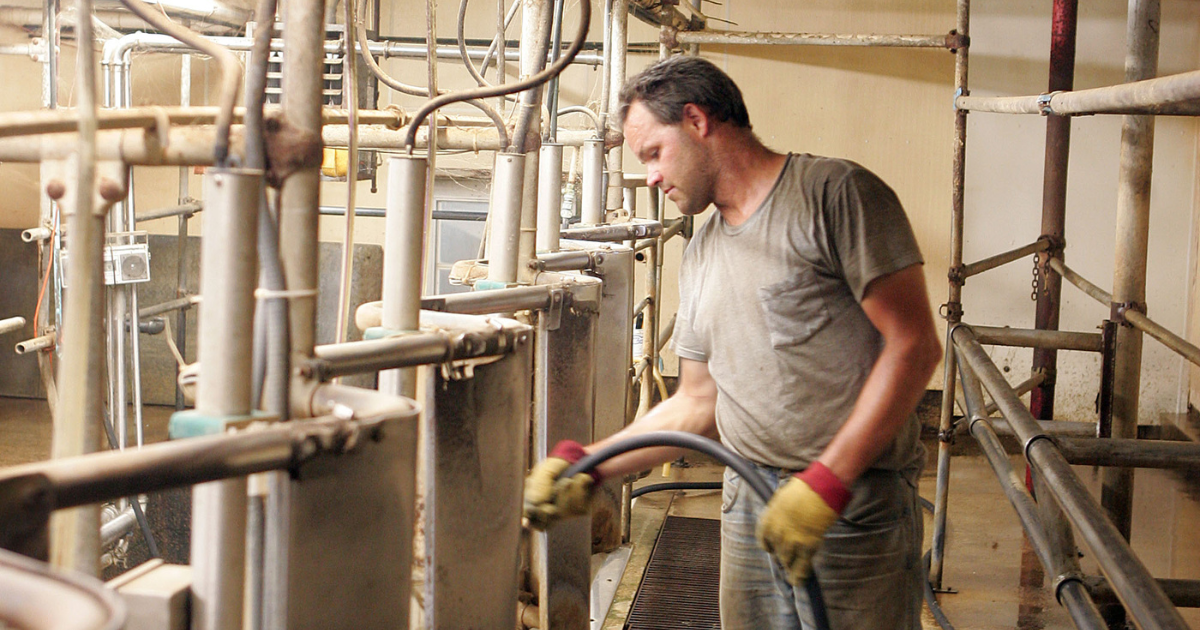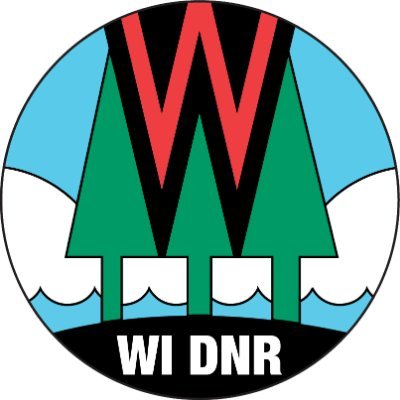Report on Nitrate Contamination in Wisconsin and its Implications for Sustainable Development Goals
Executive Summary
A recent investigation into water quality in Wisconsin reveals a significant public health and environmental crisis driven by nitrate contamination, primarily from agricultural sources. This issue presents a direct challenge to the achievement of several United Nations Sustainable Development Goals (SDGs), including SDG 3 (Good Health and Well-being), SDG 6 (Clean Water and Sanitation), SDG 11 (Sustainable Cities and Communities), SDG 12 (Responsible Consumption and Production), and SDG 14 (Life Below Water). The contamination imposes severe health risks and substantial economic costs on residents and public utilities, necessitating urgent policy and regulatory intervention.
Analysis of Contamination and Health Impacts: A Challenge to SDG 3 and SDG 6
The widespread nitrate contamination of private and public wells in Wisconsin directly undermines the core targets of SDG 6, which aims to ensure the availability and sustainable management of water and sanitation for all, and SDG 3, which seeks to ensure healthy lives and promote well-being.
Key Findings on Water Safety and Public Health
- An estimated 10% of Wisconsin residents with private wells face water contamination.
- Nitrate levels have been recorded as high as 26.6 milligrams per liter, significantly exceeding the Environmental Protection Agency’s maximum safe level of 10 mg/L.
- Health risks associated with high nitrate consumption are severe and directly contravene the objectives of SDG 3. These risks include:
- Increased risk of cancer and other diseases.
- Methemoglobinemia, or “blue baby syndrome,” a potentially fatal condition in infants.
Unsustainable Agricultural Practices as the Root Cause: Contradicting SDG 12 and SDG 15
The report from the Alliance for the Great Lakes identifies unsustainable agricultural practices as the primary source of the crisis, highlighting a failure to meet the principles of SDG 12 (Responsible Consumption and Production) and SDG 15 (Life on Land).
Sources of Nitrate Pollution
- Over 90% of nitrate contamination is attributed to the overapplication of manure and chemical fertilizers in the agricultural sector.
- The proliferation of Concentrated Animal Feeding Operations (CAFOs) exacerbates the problem, with herd sizes growing significantly. In some counties, nitrogen-based fertilizers are applied at rates 50% higher than recommended levels.
- This overapplication leads to excess nitrate leaching into groundwater, polluting the primary source of drinking water for many communities and degrading land quality, in opposition to the goals of SDG 15.
Socio-Economic Burdens and Community Impact: A Threat to SDG 11
The financial costs of mitigating nitrate contamination place a heavy burden on individuals and municipalities, threatening the viability and sustainability of communities as outlined in SDG 11 (Sustainable Cities and Communities).
Economic Costs
- Individual Costs: Residents are forced to invest in expensive solutions, including:
- Reverse osmosis filtration systems (approx. $900 initial cost plus $150 annually).
- Purchasing bottled water for vulnerable family members, such as pregnant women and infants.
- Drilling new wells, which can cost between $3,800 and $75,000.
- Public Utility Costs: Municipalities have invested tens of millions of dollars in remediation efforts.
- The Plover Water System spent approximately $6.8 million on nitrate removal.
- The Janesville Water Utility spent around $33 million to abandon a contaminated well and build new blending facilities.
Broader Environmental Consequences: Jeopardizing SDG 14
The impact of nitrate pollution extends beyond local communities, contributing to large-scale environmental degradation that compromises SDG 14 (Life Below Water).
Regional and National Impact
- Nitrate pollution is a widespread issue across the Midwest, with states like Iowa facing similar water quality crises.
- Agricultural runoff carries nitrates into major river systems, eventually flowing into the Gulf of Mexico.
- This nutrient pollution fuels harmful algal blooms that deplete oxygen in the water, creating vast “dead zones” where marine life cannot survive, directly undermining efforts to conserve and sustainably use marine resources.
Policy Recommendations for Sustainable Management
To address the crisis and align with SDG principles, the Alliance for the Great Lakes report proposes several key actions:
- Expand the state’s private well compensation program to assist affected households.
- Implement stricter regulations for CAFOs, including mandatory groundwater monitoring to enforce accountability for pollution at its source.
- Establish centralized data collection to accurately assess the statewide fiscal and public health impact of nitrate pollution.
- Promote a coordinated, science-based response focused on sustainable agricultural practices to prevent further contamination.
1. Which SDGs are addressed or connected to the issues highlighted in the article?
The article highlights several interconnected issues, primarily revolving around water contamination from agricultural practices, which directly and indirectly relate to multiple Sustainable Development Goals (SDGs).
-
SDG 3: Good Health and Well-being
This goal is addressed through the discussion of the severe health risks associated with nitrate-contaminated water. The article explicitly mentions that consuming too much nitrate can “increase the risk of cancer and other diseases” and is particularly dangerous for infants, as it can cause “blue baby syndrome, which deprives the blood of oxygen and can be fatal.”
-
SDG 6: Clean Water and Sanitation
This is the most central SDG in the article. The core issue is the lack of access to safe drinking water for residents like Tyler Frye, whose well water is “too contaminated to drink without costly filtration.” The article details how “10 percent of Wisconsin residents facing similar contamination” are denied the basic right to safe water due to pollution from agricultural sources.
-
SDG 12: Responsible Consumption and Production
The article connects the water contamination directly to production patterns in the agricultural industry. It states that “more than 90 percent of the nitrate contamination… is from excessive manure and fertilizer application.” The growth of Concentrated Animal Feeding Operations (CAFOs) and the overapplication of fertilizers represent unsustainable production methods that lead to environmental degradation and negative health impacts.
-
SDG 14: Life Below Water
The article extends the impact of the local water contamination to larger marine ecosystems. It explains that nitrates “are carried down to the Gulf of Mexico, where they feed harmful oxygen-depleting algae, resulting in ‘dead zones’ where life can’t be sustained.” This directly addresses the problem of nutrient pollution from land-based activities affecting marine life.
-
SDG 15: Life on Land
The pollution of groundwater is a key theme, which falls under the protection of terrestrial and freshwater ecosystems. The article describes how excess nitrate “dissolves in water and leaches into groundwater,” contaminating a vital freshwater resource and thus impacting the health of inland ecosystems.
2. What specific targets under those SDGs can be identified based on the article’s content?
Based on the issues discussed, several specific SDG targets can be identified:
-
Target 3.9
“By 2030, substantially reduce the number of deaths and illnesses from hazardous chemicals and air, water and soil pollution and contamination.” The article’s focus on the health risks of nitrate contamination, such as cancer and blue baby syndrome, directly relates to this target of reducing illness from water pollution.
-
Target 6.1
“By 2030, achieve universal and equitable access to safe and affordable drinking water for all.” The story of Tyler Frye, who cannot drink his well water and must pay for expensive filtration systems, exemplifies the challenge of achieving this target. The article highlights that this is not an isolated case and that the costs are a significant barrier to affordable, safe water.
-
Target 6.3
“By 2030, improve water quality by reducing pollution, eliminating dumping and minimizing release of hazardous chemicals and materials…” The article identifies the source of pollution as “excessive manure and fertilizer application by the agricultural industry,” which directly aligns with the goal of reducing pollution to improve water quality.
-
Target 12.4
“By 2020, achieve the environmentally sound management of chemicals and all wastes throughout their life cycle… and significantly reduce their release to air, water and soil in order to minimize their adverse impacts on human health and the environment.” The overapplication of nitrogen-based fertilizers and manure from CAFOs is a clear example of waste and chemical mismanagement that this target aims to address.
-
Target 14.1
“By 2025, prevent and significantly reduce marine pollution of all kinds, in particular from land-based activities, including marine debris and nutrient pollution.” The article’s mention of nitrates traveling to the Gulf of Mexico and creating “dead zones” is a direct reference to the problem of nutrient pollution from land-based activities, which this target seeks to mitigate.
3. Are there any indicators mentioned or implied in the article that can be used to measure progress towards the identified targets?
Yes, the article mentions several quantitative and qualitative indicators that can be used to measure progress:
-
Concentration of nitrate in drinking water
This is a direct, quantitative indicator of water quality. The article provides specific measurements, such as the EPA’s maximum safe level of 10 milligrams per liter (mg/L) and the levels in Tyler Frye’s well, which tested at 26.6 mg/L and later at 14.3 mg/L. Tracking these levels measures progress towards Targets 6.1 and 6.3.
-
Financial cost of accessing safe water
The article implies that the affordability of water is a key issue by detailing the high costs borne by individuals and municipalities. These include $900 for a reverse osmosis system, $150 per year for filters, $3,800 to $75,000 for a new well, and millions in public utility costs (e.g., $6.8 million in Plover, $33 million in Janesville). These costs serve as an indicator for Target 6.1.
-
Rate of fertilizer application above recommended levels
The article states that in four Wisconsin counties, “nitrogen-based fertilizer, including manure, was applied at a rate 50 percent higher than that recommended by University of Wisconsin Extension agronomists.” This provides a clear indicator for measuring progress on sustainable agricultural practices related to Target 12.4.
-
Proportion of population affected by contaminated water
The article estimates that “10 percent of Wisconsin residents” face contamination in their wells. This percentage is an indicator of the scale of the problem and can be used to track progress towards achieving universal access to safe water (Target 6.1).
-
Impact on downstream ecosystems
The mention of nutrient pollution creating “dead zones” in the Gulf of Mexico is a qualitative and measurable indicator of the environmental impact of land-based activities, relevant to Target 14.1.
4. Create a table with three columns titled ‘SDGs, Targets and Indicators” to present the findings from analyzing the article.
| SDGs | Targets | Indicators |
|---|---|---|
| SDG 3: Good Health and Well-being | 3.9: Reduce illnesses from water pollution and contamination. |
|
| SDG 6: Clean Water and Sanitation |
6.1: Achieve universal and equitable access to safe and affordable drinking water.
6.3: Improve water quality by reducing pollution. |
|
| SDG 12: Responsible Consumption and Production | 12.4: Achieve environmentally sound management of chemicals and wastes to reduce their release to water and soil. |
|
| SDG 14: Life Below Water | 14.1: Prevent and significantly reduce marine pollution from land-based activities, including nutrient pollution. |
|
| SDG 15: Life on Land | 15.1: Ensure the conservation and sustainable use of terrestrial and inland freshwater ecosystems. |
|
Source: sentientmedia.org







